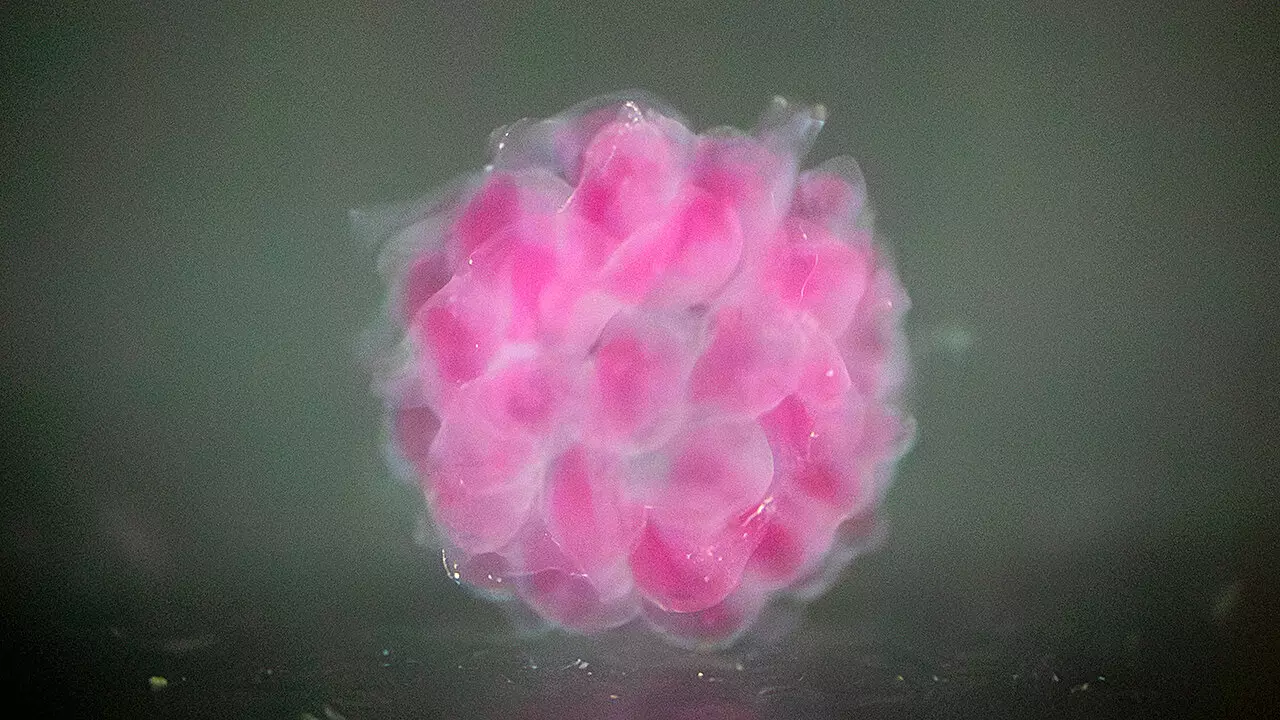In a groundbreaking revelation from the University of Virginia School of Engineering and Applied Science, Liheng Cai and his Ph.D. student Jinchang Zhu have unveiled a transformative method for creating engineered tissues. Their innovative approach, known as the Digital Assembly of Spherical Particles (DASP), leverages biomaterials with mechanical properties specifically designed to mimic those of human tissues. This advancement stands out in a field where achieving biocompatibility and structural integrity has proven to be a significant hurdle. By harnessing the capabilities of this new bioprinting technology, the researchers aim to establish the building blocks for producing human-compatible organs on demand.
The core functionality of DASP lies in its ability to construct three-dimensional structures through a process that can be likened to pixel manipulation in traditional 2D designs. In this case, the “voxels” serve as the three-dimensional equivalents, enabling the precise construction of biological tissues. This novel method allows for an unprecedented level of control over the properties of the materials used, indicating a substantial leap forward from existing bioprinting methods.
The Scientific Breakthrough: Double-Network Hydrogels
Cai and Zhu’s research has successfully developed double-network hydrogels, which consist of two intertwined molecular networks. This unique structure is mechanically robust yet versatile enough to replicate the physical characteristics of human tissues accurately. Unlike previous hydrogel bio-inks that often posed risks concerning toxicity and compatibility with human cells, the new hydrogels boast lower toxicity and enhanced biocompatibility. At the core of this advancement is the engineering of polymer hydrogels to closely mimic human tissue by adjusting the arrangement and chemical bonding of monomers into sophisticated networks.
Encapsulating human cells within these hydrogel particles, this new technology promises a plethora of innovative applications, particularly in studying and perhaps treating various diseases. By enabling the creation of organoids—three-dimensional cell models functioning like human tissues—researchers can better investigate disease progression, thereby uncovering potential cures.
Advancements from DASP 1.0 to DASP 2.0
The initial iteration of DASP technology was introduced in 2021 and demonstrated the potential of using biomaterial voxels as foundational elements for 3D structures with biological functions. However, it encountered significant limitations in terms of the brittleness of hydrogels and their limited tunability. With the progress into DASP 2.0, the researchers have effectively resolved these challenges through the incorporation of rapid cross-linking techniques enabled by “click chemistry.” This development not only permits the creation of stronger materials but also enhances their adaptability to replicate the mechanical properties of various human tissues.
The multichannel nozzle designed by Cai and Zhu has been a pivotal advancement in this endeavor. The ability to mix hydrogel components in real time and instantly deposit them into matrices is a game-changer. It removes the need for premixing—an essential adjustment given the rapid phase transition from liquid to gel, which can occur in under a minute. This process not only enhances the speed and efficiency of bioprinting but also crucially fine-tunes the mechanical attributes of the printed tissues to match those of human organs.
Technological Challenges and Future Directions
The journey toward voxelated bioprinting isn’t without its challenges. Both fundamental and technological hurdles persist in the realm of manipulating viscoelastic materials. Cai accentuates that mastering these properties is essential for advancing soft matter science and the techniques of 3D bioprinting. Nonetheless, the groundwork laid by DASP-2 represents a significant stride toward making artificial organ transplantation a reality. Furthermore, applications in disease modeling and drug screening are not just theoretical possibilities; they embody the potential for immediate, real-world implementation.
As the technology evolves, one can envision a future where organ shortages may become a relic of the past, where bioprinting could produce tailored organs for transplant that are not only compatible but also designed to meet the specific needs of individual patients. The implications of such advances are immense, marking a new era in regenerative medicine that could enhance the quality of life for countless individuals.
By reimagining the landscape of bioprinting and regenerative medicine, researchers like Cai and Zhu are paving the way for profound solutions to some of humanity’s most pressing health challenges, promising a future where engineered tissues could ultimately bridge the gap between traditional transplant methods and individual patient needs.

